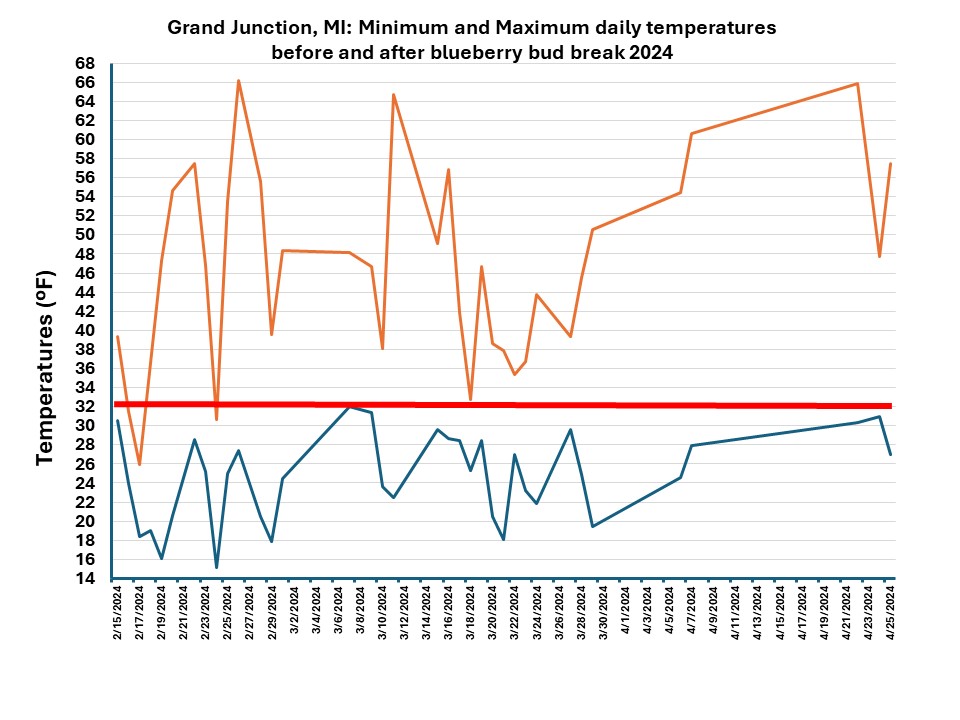West central Michigan small fruit update – June 19, 2024
Blueberry harvest has started in west Michigan with fruit of high quality and flavor.

Michigan blueberry growers are preparing to start harvest of varieties like Duke, Brigitta and Bluetta. These early season varieties are hand harvested for fresh market and for local consumption in restaurants, local farm markets and supermarkets. This season, the first harvest is taking place two weeks earlier than in past seasons due to mild winter temperatures and earlier arrival of springtime. During budbreak and subsequent blueberry bloom period, there were days with temperatures fluctuating widely between freezing at night and temperatures above 60 degrees Fahrenheit during the day, causing freeze/frost damage in mid-season varieties (Figure 1).

So far, there are no major problems reported by growers or found during on-farm integrated pest management (IPM) scouting. Insects attacking fruit, such as cherry fruitworm and cranberry fruitworm, are finishing their seasonal cycle. There was a limited emergence of cherry fruitworm and a large emergence of cranberry fruitworm in a brief period (Figure 2). IPM scouting around west central Michigan blueberry fields indicated only sporadic fruit damaged by fruitworms (Photo 1). On the other hand, thrips were a serios problems during the bloom period in early and mid-season varieties. Thrips caused abortion of flowers and pollination problems in affected blueberry fields. However, combating this pest during bloom is nearly impossible due to the presence of pollinator insects.

There are reports of the arrival of spotted wing drosophila in cherries as well as in blueberries in Allegan and Van Buren counties. Growers with varieties near harvest need to be aware of the presence of spotted wing drosophila in their fields by installing approximately one monitoring trap per 5 acres. Michigan State University Extension also reminds growers that there is not an intervention threshold to start the chemical control of this pest. If flies are trapped and you are not ready to harvest, you may apply Lannate, Imidan or Assail to delay the establishment of a spotted wing drosophila resident population.
For organic growers, Grandevo WDG (2–3 pounds) and Entrust 2 SC (4–6 fluid ounces) are alternatives for spotted wing drosophila management. Check the Michigan Fruit Management Guide (Michigan State University Extension Bulletin E-154) for more options and recommended doses.
Finally, during harvest time, hot temperatures reaching the upper 90s F represent a constant source of concern for field workers like pickers. The current weather forecast for west Michigan predicts extreme summer temperatures reaching 100 F around central and southwest Michigan precisely during harvest. Therefore, growers need to follow the Michigan Occupational Safety and Health Administration (MIOSHA) guidelines to deal with heat illnesses caused by hot temperatures in the field. OSHIA has a downloadable "Prevent Heat Illness at Work" poster with guidelines and recommendations. Remember that labor contractors and farm owners share responsibilities for the well-being of farm workers while harvesting on their farms.



 Print
Print Email
Email




